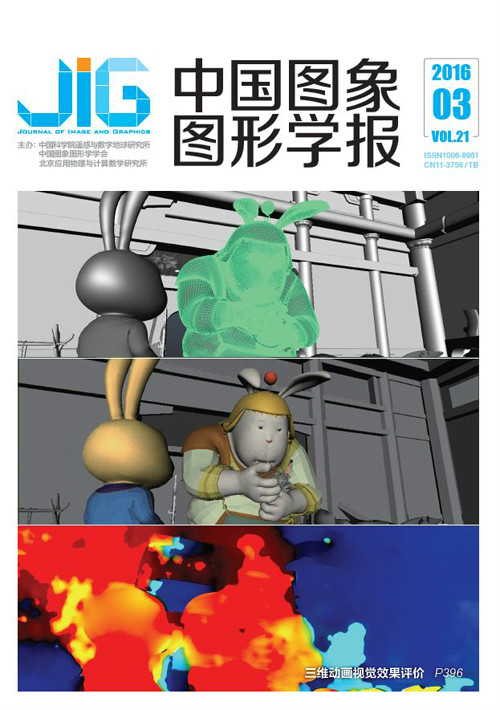
3维立体动画制作的视觉效果评价
摘 要
目的 视觉效果评价是3维立体动画制作过程中不可忽略的一环。评价过程主要依靠专业人员的行业经验,受人员知识水平、测试环境等因素的影响。针对该问题,提出了一个主客观结合的评价模型。方法 首先建立了一个面向前期制作的三维动画场景数据集用以训练和测试,针对视觉效果评价的两个重要指标:立体感和视觉舒适度,进行主观实验得到相应的分数;提取全局视觉舒适度特征和感兴趣区域立体感特征,使用支持向量回归(SVR)方法,经过训练和测试得到舒适度评价模型和立体感评价模型。结果 通过将性能验证实验得到验证场景的主观分数与评价模型给出的结果进行比对,结果表明,运用评价模型得到的预测分数与观众主观分数基本一致,该模型可以对影响视觉效果的视觉舒适度和立体感予以5级量化评分。结论 本文所提出的视觉舒适度和立体感评价方法,能建立影响视觉效果的特征与主观评分间的关系,用得到的模型预测分数给制作人员一个及时直观的调节依据标准。
关键词
Visual experience assessment for stereoscopic three dimensional animation production
Wang Zeyu, Lu Dawei, Liu Liang, Ma Huadong(Beijing Key Lab of Intelligent Telecommunications Software and Multimedia, Beijing University of Posts and Telewmmunication Beijing 100876, China) Abstract
Objective The assessment of visual experience plays an important role in stereoscopic 3D animation production. In practice, visual experience assessment heavily depends on subjective evaluation by professional cinematographers. In this paper, an assessment model combining visual features and subjective scores is proposed. Method Visual comfort and stereo effect are the main indicators in visual effect assessment. Based on the two indicators, disparity features of visual comfort and stereo effect of the input animation scenes are extracted. Then,the support vector regression method is used to obtain the mapping function of disparity features to visual comfort and the mapping function of disparity features to stereo effect assessment scores. Result Validation experiment results demonstrate that the proposed method can automatically predict the assessment of visual comfort and stereo effect through five-level scores. Conclusion This method can reveal the relationship between visual features and subjective assessment scores, as well as visually and efficiently assist animation cinematographers in stereo adjustment.
Keywords
visualizations animation production stereoscopic 3D disparity visual experience assessment rendering
|



 中国图象图形学报 │ 京ICP备05080539号-4 │ 本系统由
中国图象图形学报 │ 京ICP备05080539号-4 │ 本系统由